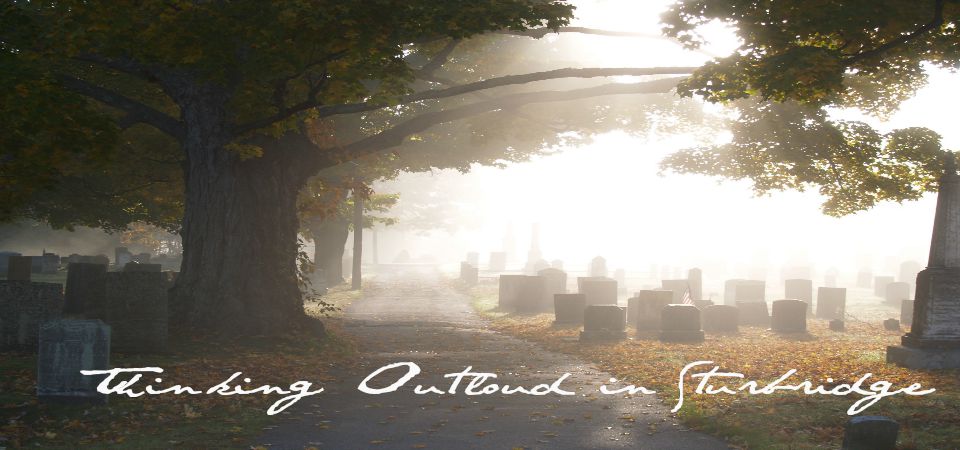Editors note: The following was submitted by Sturbridge resident Ric Skinner.
A series of debates has been proposed to take place between the candidates for Selectmen for the upcoming Town election. I’d like to take this opportunity to challenge the candidates to address during the debates their vision and commitment to improving the Town’s Emergency Management Program and Disaster Response capabilities. As an Emergency Management professional and resident I have had the opportunity to work voluntarily with the Town Emergency Management Director and staff and have found them to be top notch in their dedication and in applying the limited resources they have at their disposal, however there are some serious shortcomings which recent disasters have underscored as critical needs to be improved, such as:
· A functional and at least basically equipped Emergency Operations Center
· A state of the art communications system and ability to alert residents with timely and relevant disaster information
· Increase in number and variety of training opportunities to exercise “the system”
· Capabilities to provide Emergency Managers and Disaster Responders with timely Situational Awareness and Decision Support tools
· Better organization, training and utilization of volunteer residents willing to be active in disasters (e.g., Community Emergency Response Team, Map Your Neighborhood Program, Volunteer Resource Center)
I’m sure it’s very difficult to run an Emergency Management Program with what I understand to be a “token” budget. I’m amazed Public Safety personal can carry out Emergency Management and Disaster Response function as well as they do with what they have. Fortunately, there are occasionally state or federal grants that help fund specific initiatives. But there needs to be more Town budgetary support such as a line item “Emergency Management Program” that’s more than just token.
As a former environmental management professional I love the wealth of trees and other environmental resources we have in Sturbridge. We’re fortunate that we have a compassionate and dedicated Tree Warden to care for this resource. However, the focus, effort and money for replacing damaged and destroyed trees is disproportionate to the need for being prepared for and responding to what caused those trees to be damaged and destroyed. The “disaster cycle” rolls smoothly when all four components – Planning & Mitigation, Preparedness, Response, and Recovery – are adequately staffed, funded, trained, organized and exercised. While Response and Recovery are what all the residents see when a disaster strikes our community, Planning & Mitigation and Preparedness usually happen behind the scenes and are what keeps the residents safe between events and lessen the impacts of the events when they do occur.
Ric Skinner
Sturbridge Resident

On Tuesday, Jan. 17, at the International Disaster Conference & Expo in New Orleans, FEMA Administrator Craig Fugate said the government needs to stop thinking it can handle all aspects of a disaster and make sure the private sector is included in disaster planning and response. He challenged emergency planners to engage chambers of commerce, service organizations (Rotary, Kiwanis, etc.) and the business community in general to see what the private sector can do to help in the wake of a disaster. He was not only referring to “big government” (federal) or “middle government” (states), but government at all levels, including here in “little government” (towns). Engaging the private sector not only makes sense because it is an integral part of the community and a critical component of a community’s resilience to recover following a disaster, but there is another very important aspect.
ReplyDeleteAs federal and state funding for disaster planning/mitigation and preparedness has been significantly reduced over the past 10 years, disasters and the need for a community to be ready to respond adequately and relevantly have not – if anything that needs seems to have increased. Private sector businesses and organizations need to be brought into the disaster cycle (planning/mitigation, preparedness, response, recovery). We saw some of this during last year’s tornado response where local businesses contributed rakes, gloves, water and sandwiches to the volunteer recovery teams. But there are other ways the private sector can get involved with a more lasting effect by helping to support volunteer programs like the Community Emergency Response Team and the Map Your Neighborhood Program (recently implemented in Sturbridge) by underwriting the cost of duplication of training materials, purchase or funding to provide volunteers with basic preparedness equipment (e.g., hard hats, work gloves, flashlights, backpacks, safety glasses, etc.), and compensation for trainers.
Towns like Sturbridge, especially those that suffered significant disasters and high costs of recovery, requiring them to dig into their own coffers to make up for what FEMA reimbursements don’t cover, have little or no budget to support volunteer programs. They typically rely on grants that have a time-consuming application process, and if successful take a long time to receive the funding. Volunteer programs can’t wait – recruitment, training, and practice (e.g. disaster exercises) must be an ongoing activity.
I call on Town government to seriously consider ways to engage businesses, business organizations and service organizations to help strengthen our volunteer programs as suggested above. Untrained and self-deploying volunteers are usually a hindrance to disaster recovery operations - kind of like herding cats by Public Safety taking their valuable time and resources that is better allocated to manage the disaster recovery. On the other hand trained volunteers can be a highly valuable resource not only when the trees fall, waters rise, or power goes out, but also during events that bring thousands of guests to our community (e.g., PanMass Challenge, Molly Bish Ride, etc.). Whether a disaster or social event, there are huge demands on our Public Safety resources which could greatly benefit from adequately trained and equipped volunteers – thanks to the support from the private sector.
Ric Skinner, GISP
Sturbridge Resident
Very good.
ReplyDelete